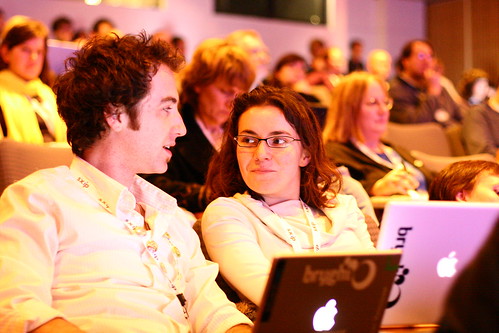They Are The Heartbeat Of Your Presentation: Do You Know Them?
“Getting to know you,
Getting to know all about you.
Getting to like you,
Getting to hope you like me.”
These lyrics from the King and I’s “Getting To Know You” would make a great theme song for every presenter. They clearly articulate one of the very first steps all presenters should take: get to know your audience.
It’s About Them
What’s at the heart of your presentation?
Your audience.
As a presenter, you need to remember that it’s not about you. Your presentation is not about your information or your data. It’s really about them — your audience.
To succeed, you need to place your audience at the center of your action. Make them feel as if the presentation is addressing them personally. Focus your content on meeting their needs.
Act As The Mentor
While you may be the most knowledgeable person in the room, how you wield that knowledge drives your success as a presenter.
Approach your time in front of the audience with an “it’s all about them” attitude and your role will be the guru and mentor. The voice that helps your audience get unstuck in their journey.
Seven Audience Questions to Ask
Thinking about the audience will ensure you place their needs first because, ultimately, they came to see what you can do for them.
In Slide:ology, author Nancy Duarte identifies seven questions presenters should ask about their audience.
1. What are they like?
What are the demographics of your audience? You want to understand them on a personal level as well.
As you design your presentation, walk in their shoes to describe what they encounter.
2. Why are they here?
Research shows that the top two reasons people attend a conference is for education and networking. Your audience may be there to get the latest research or for CEs. Or they may be mandated to attend. Ultimately, they are there for relevant information they can apply immediately.
3. What keeps them up at night?
Craft your presentation with the thought of solving your audience’s fear, pain point or thorn. Answer this question, “How will your presentation help your audience sleep better at night?”
4. How can you solve their problem?
Attendees are problem-centric, not data-driven. How can your presentation help solve their problems?
If you have research to share, focus on the outcome of that research, not the details and data. You can give the details of your research online.
5. What do you want them to do?
Start your presentation with WIIFM – “What’s In It For Me?” Give them the “So what” first.
Then focus on what you want them to do with that information. Make sure there’s clear action for your audience to take.
6. How might they resist?
What will keep your audience from adopting your message or call to action? What barriers might they face?
7. How can you best reach them?
People are meaning-driven. They must be able to connect your information with their lives.
Vary the delivery methods you use to reach your audience. Use stories to provide a hook. And by all means, allow time for your audience to discuss your content and make meaning from it.
Your Presentation Is a Tool
Presentations can be powerful tools that persuade people to change their thinking or actions. If you focus on your audience first and adopt the role of a mentor, you are more likely to succeed.
How can you leverage these questions in your own presentations? What are some tips for conference organizers to shift from being speaker-centric to attendee-centric and help their speakers focus on the audience?



Brilliant post Jeff. A view that so few speakers take.